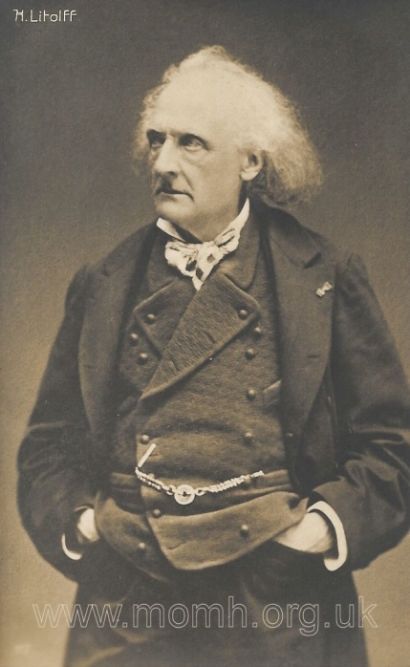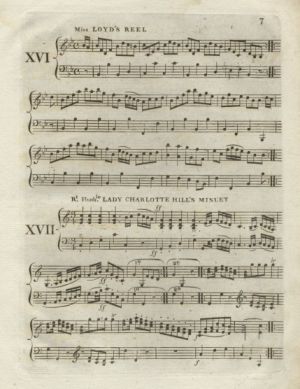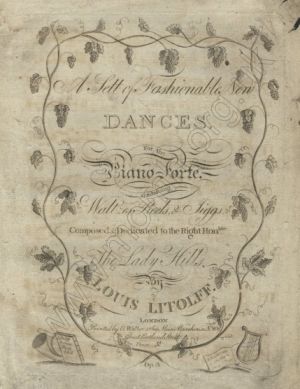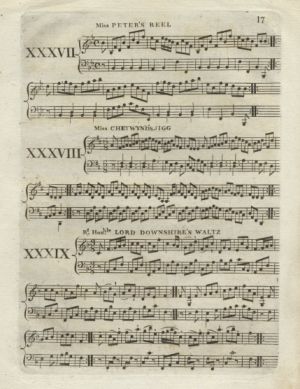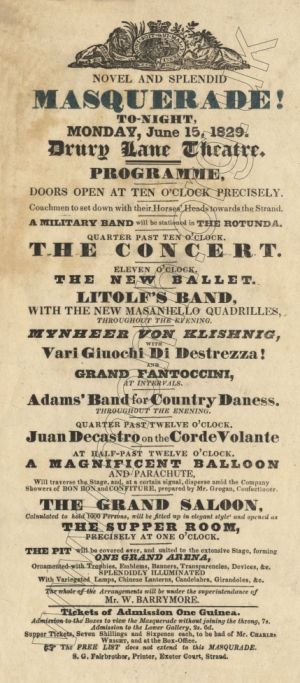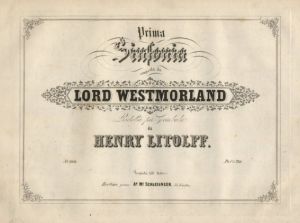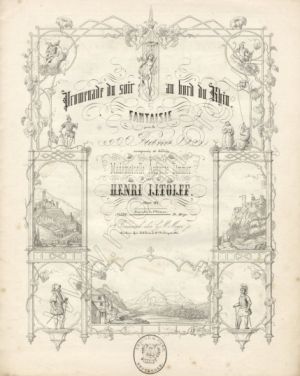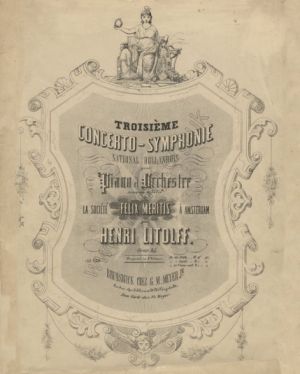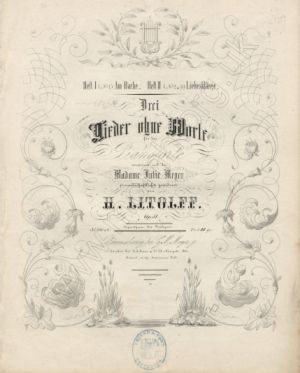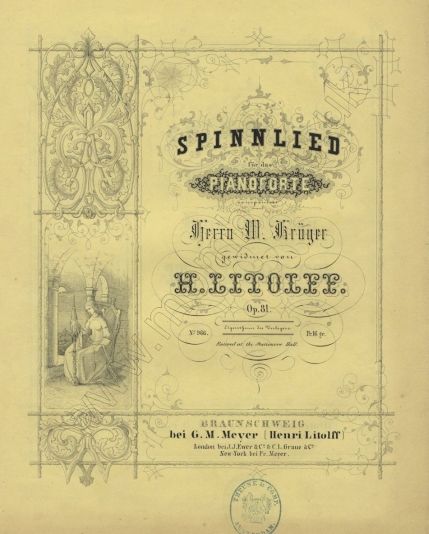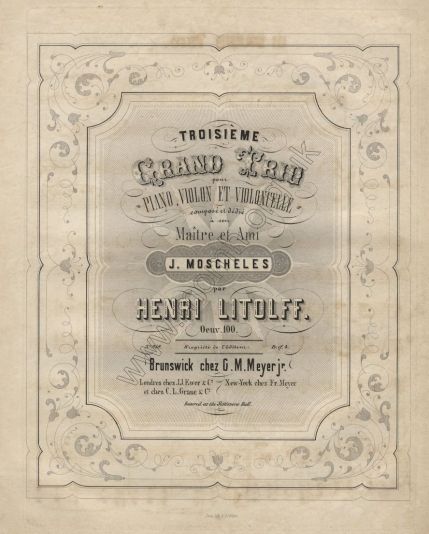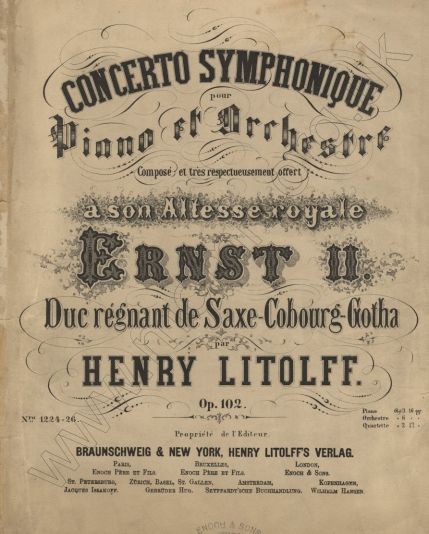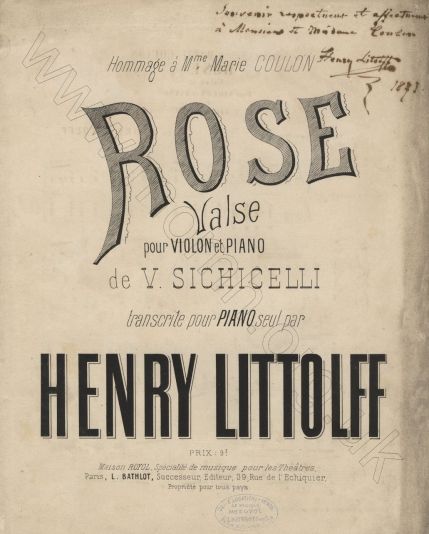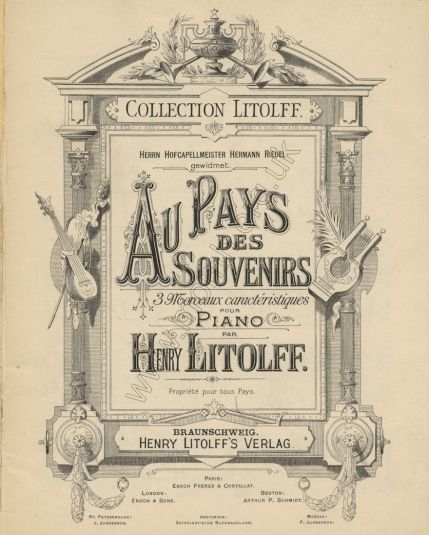Exhibition
Henry LITOLFF (1818-1891)
February 2018
LITOLFF, Henry Charles (b.London, 6 February 1818; d.Paris, 6 August 1891)
There has been much confusion over the details of this distinguished pianist-composer’s life and ancestry. The birth date given above is confirmed by entry in the St Marylebone Parish Registers. (Birth 6 February, Baptism 29 March). In this bicentenary month we are taking the opportunity to publish a few new facts and display a small selection of his first edition title pages. Henry’s father was Martin Litolff (1772-1840), a French violinist who reached London in December, 1802. The Morning Chronicle of 24 December refers to him ‘lately arrived from France … has been several years employed as a leading performer in respectable concerts’ and gives his address as 29 Riding-house-lane, Great Titchfield-street. The Louis Litolff (c.1777-1840) who published dance music in the early years of the century, also from addresses in Marylebone and in 1815 advertising himself as ‘Professor of Dancing’, was Martin’s younger brother. Martin had been married twice (to Henriette Girard, Poitiers 1798 and to Rosalinda Harris née Massart, Manchester 1810) and had six children before marrying Sophia Hayes (1793-1828) at St George’s, Hanover Square on 9 January 1815. Henry Charles was the fourth of nine children born to Sophia. Henry’s elder brother, Martin and younger brother Frederick Thomas were also musicians.
After initial tuition from his father and the violinist James Calkin, Henry was able to take an occasional place in orchestras and dance bands from an early age. As a pianist he was encouraged by the distinguished piano maker F. W. Collard who had premises in Tottenham Court Road. At the age of ten he was fortunate in being recommended to the great virtuoso and piano teacher Ignaz Moscheles, who agreed to teach him gratis.
Moscheles immediately recognised his talent. His father – an Alsatian, who with difficulty supported his large family by playing dance-music – was too poor to have a piano for his son Henry, who practised in Collard’s warehouse, and was so well prepared at every lesson that he delighted and surprised Moscheles with the playing of his Studies and Concertos. (Life of Moscheles … by his wife, London, 1873)
On 29 May 1837, aged 19, he married Elizabeth Mary Etherington, ‘daughter of Mr William Etherington of the Legacy Duty Office’ at Greenwich. [Outside London but not Gretna Green.] Two children were born to the couple (and died) in France in 1838 and 1839, where Henry established important professional contacts, leading to debuts in Paris and Brussels. Back in London in June 1840 for a concert at the Hanover Square Rooms with the support of colleagues such as Dorus-Gras, Dragonetti and Benedict, he was described as ‘entitled to rank amongst the first class of piano-forte players’. Later in the same year Martin Litolff died and was buried at the Whitfield Chapel, Tottenham Court Road.
Henry’s rapidly developing continental career was followed by a return to London in April 1846 where he encountered an immediate action and claim brought by his in-laws. This resulted in his bankcruptcy and imprisonment in the Debtors’ Prison. His escape (at present imperfectly documented but said to be after several months) and return was followed by permanent exile from his native country.
It was in the 1840s that he formed a friendship with the music publisher Gottfried Meyer of Brunswick. Two years after Meyer’s death he became a citizen of that town and married the latter’s widow Julie, with whom he entered into business partnership, changing the name to Henry Litolff’s Verlag and building the house’s reputation in numerous important respects. He also adopted the Meyers’ son Theodor, who was to succeed him in management of the business. Thereafter based in Paris, he had a productive and glittering career, was compared to Liszt and Thalberg and admired by Berlioz, Tchaikovsky, Bülow, Rubinstein, Heller, Joachim and other leading figures of his time. As a composer he produced eleven performed operas, orchestral works, concertos and numerous salon pieces for the piano.
After divorce from Julie in 1858, he married (1860) Marie Louise Josephine de La Rochefoucauld (1837-1870), by whom he had two children. On 14 February 1873 he married Lucie Mathilde Herrier (1856-1936) who bore him another three, including one survivor, Sophie Lucie Henriette (1873-1933).
After two years of failing health he died on 6 August 1891 at his dwelling, Avenue Central 8, Bois Colombes, Paris. He was buried in the Cimetière Gabriel Péri de Colombes. During the following year a considerable sum was raised (subscribers including Verdi, Saint-Saëns, Massenet and Boito) for the erection of a monumental tomb and Paderewski supported this in a number of concerts. The tomb was unveiled in Paris in 1900.
1-3. Louis Litolff : A Sett of Fashionable New Dances, Op.3. London, [c.1803]. The third publication of dances by Henry’s uncle, who was in London from at least 1799. Some twelve opus numbers are known.
Flyer for a masquerade at the Theatre Royal, Drury Lane, 15 June 1829, featuring Martin Litolff’s Quadrille Band.
John Fane, 11th Earl of Westmorland: Prima Sinfonia. Ridotta per Cembalo da Henry Litolff. Berlin, [1846].
1. Promenade du soir au bord du Rhin, Op.44. Brunswick, [c.1845]. 2. Troisième Concerto-Symphonie national hollandois, Op.45. Brunswick, [1846]. 3. Drei Lieder ohne Worte, Op.51. Brunswick, [c.1848]. Litolff married the dedicatee in 1851.
1. Ouverture zu Maximilian Robespierre, Op.55. Brunswick, [c.1850]. Arrangement for piano, 2 hands of Litolff’s most successful orchestral work. 2. Spinnlied, Op.81. Brunswick, [1853]. First edition of Litolff’s most popular solo work. 3. Troisième Grand Trio, Op.100. Brunswick, [1854].
1. Concerto Symphonique [No.4], Op.102. Brunswick, [1856]. 2. Vincenzo Sichicelli (1830-1905) : Rose. Valse … transcrite pour Piano seul par Henry Littolff [sic]. Paris, [1873]. Inscribed by Litolff to M. and Mme. Coulon, 1873. 3. Au Pays des Souvenirs. 3 morceaux caractéristiques pour Piano. Brunswick, [c.1890].
The Museum is grateful for ongoing research of Gail Naughton and Jennie Bisset into Henry Litolff.
